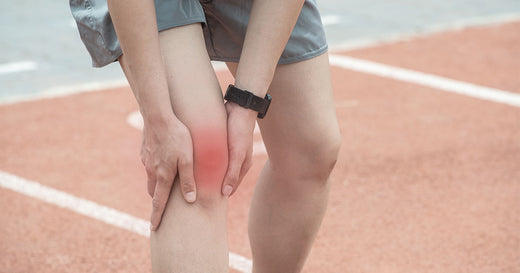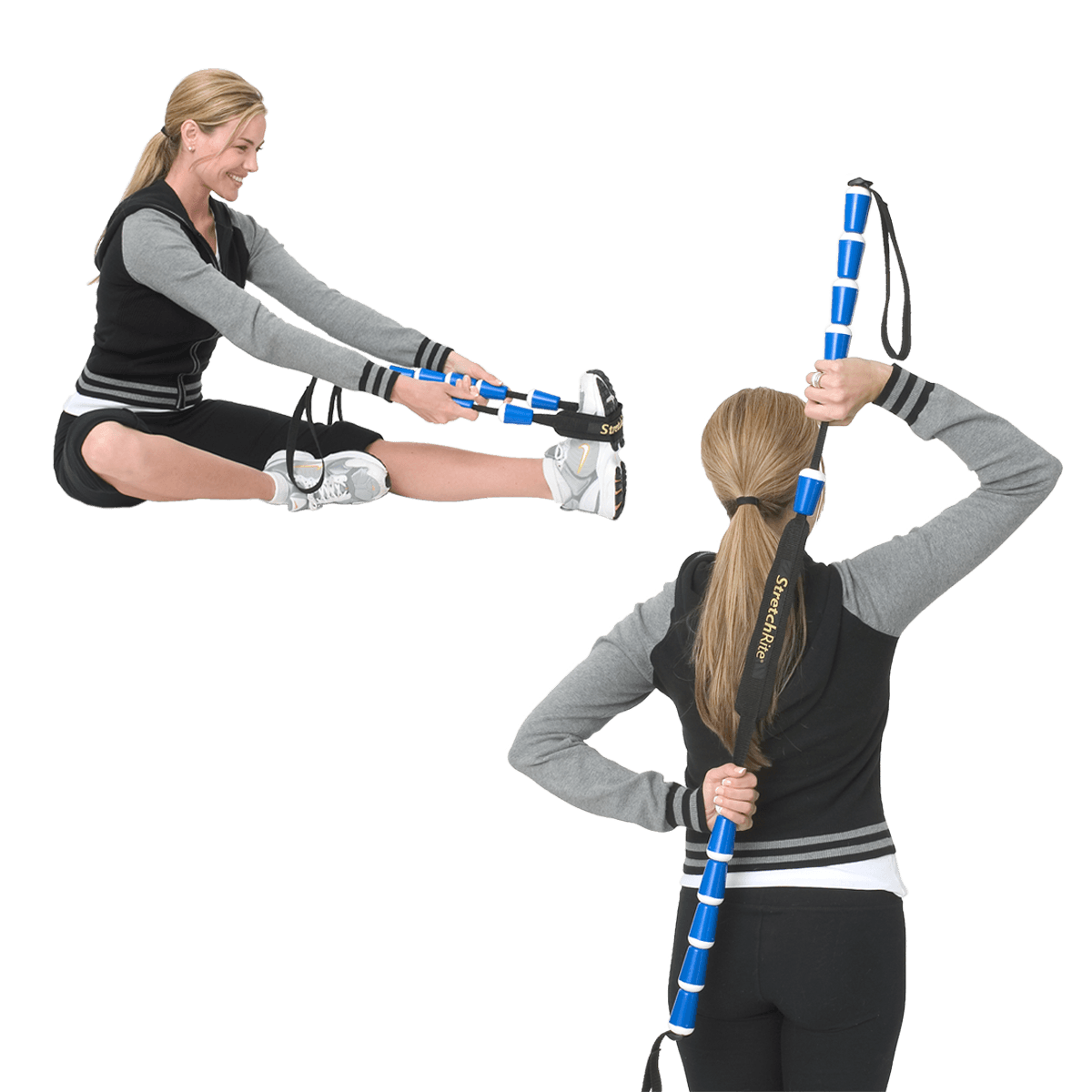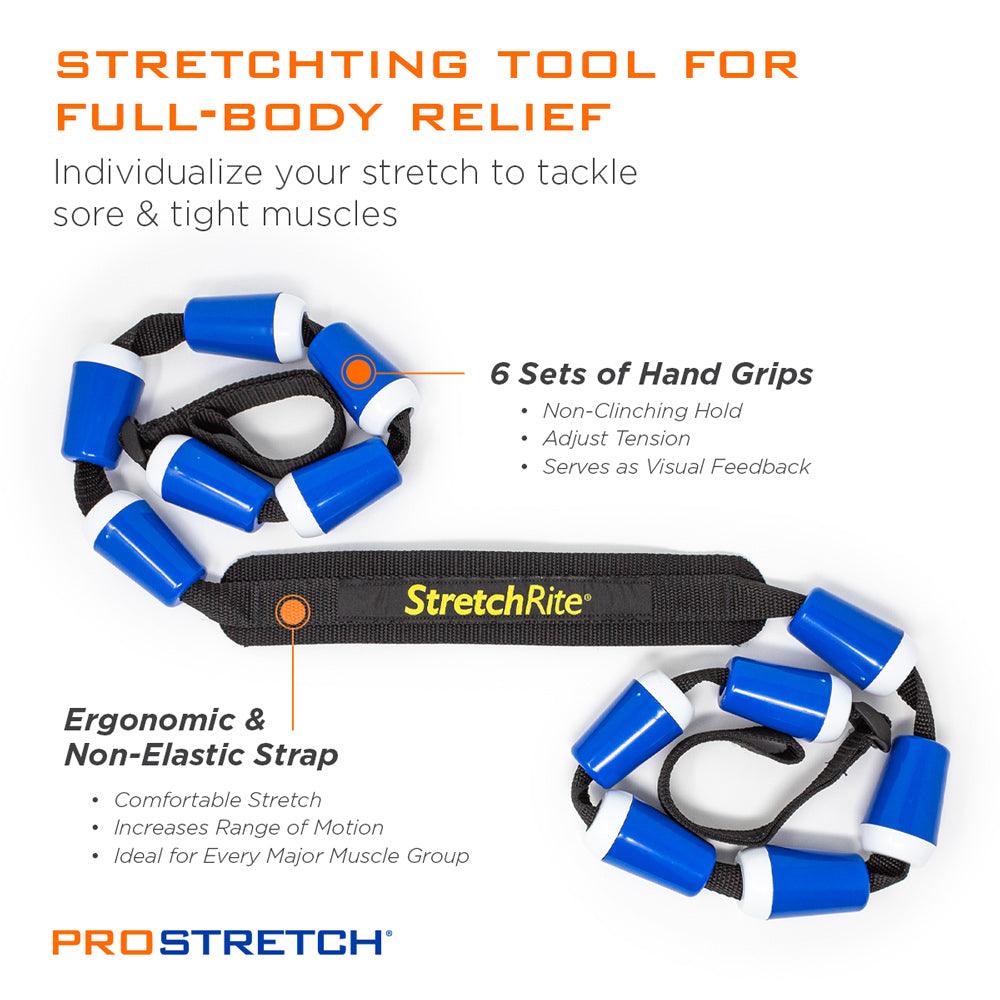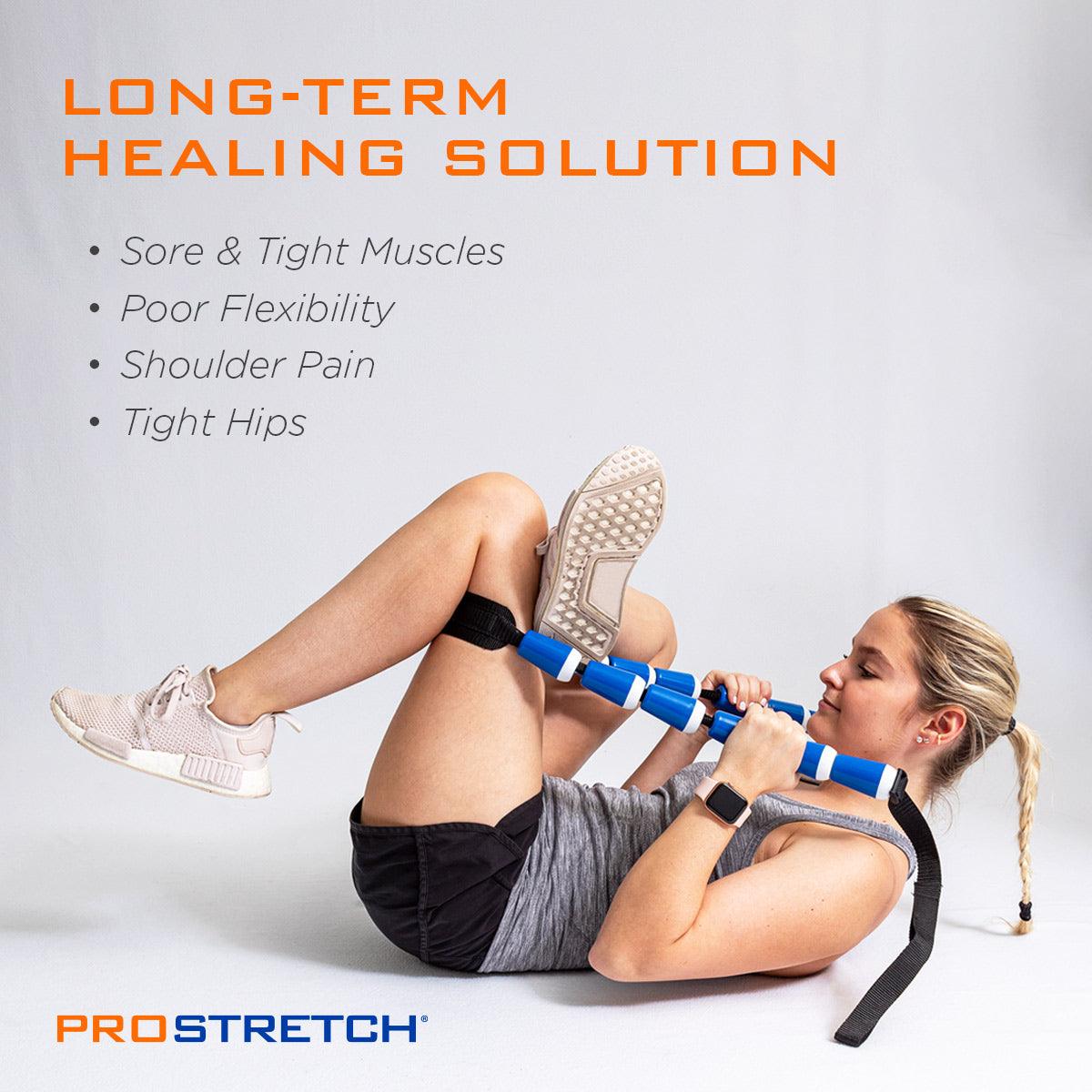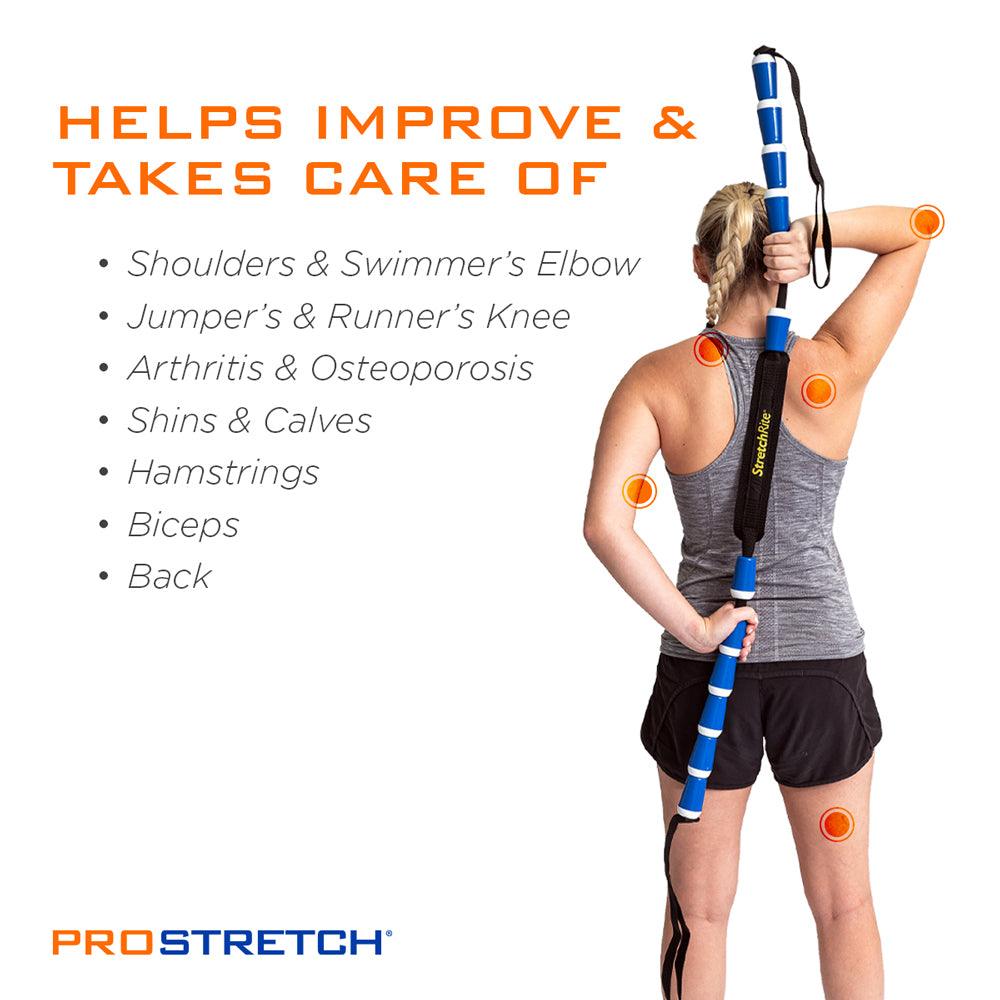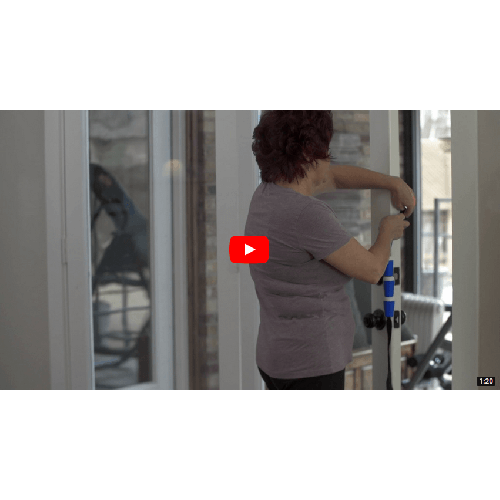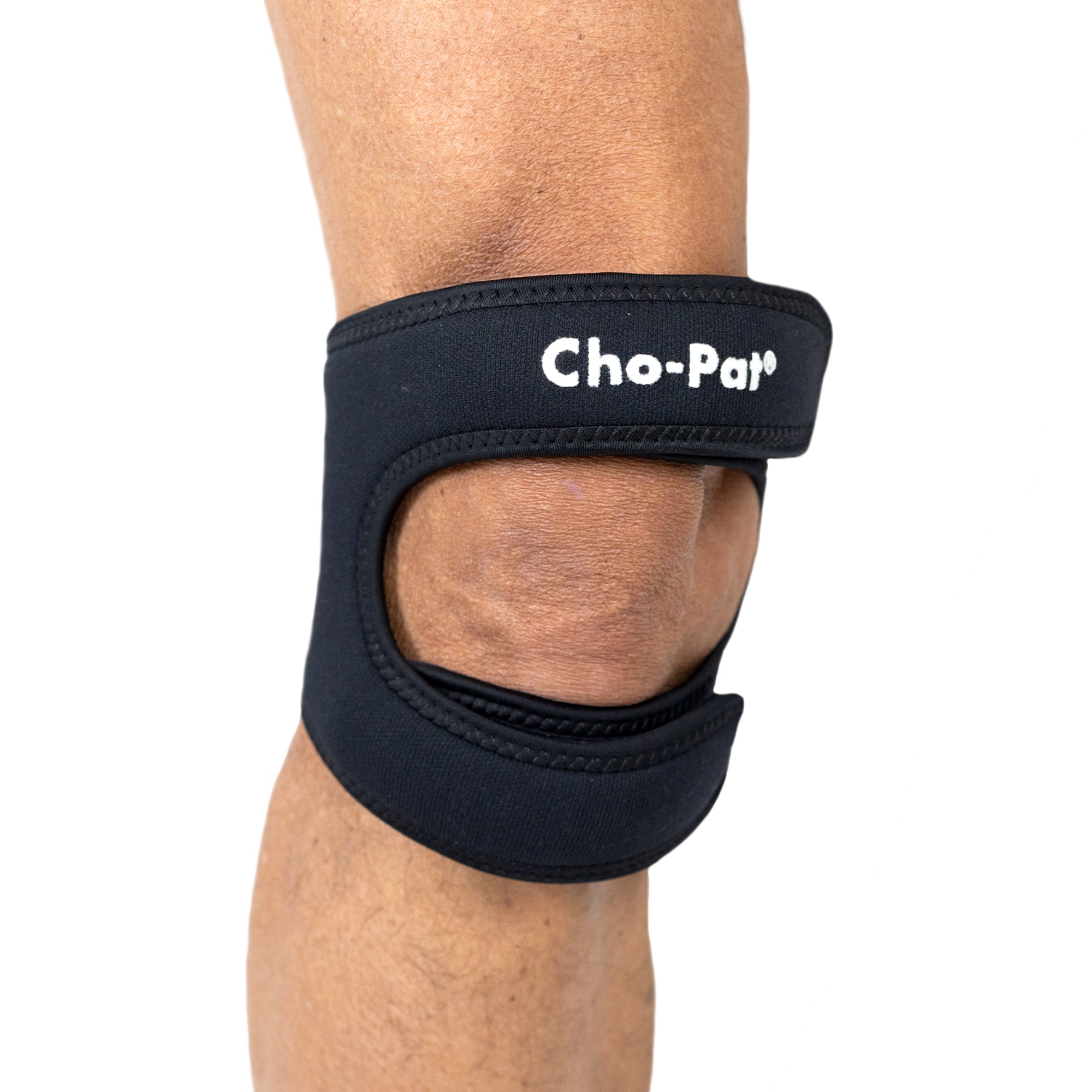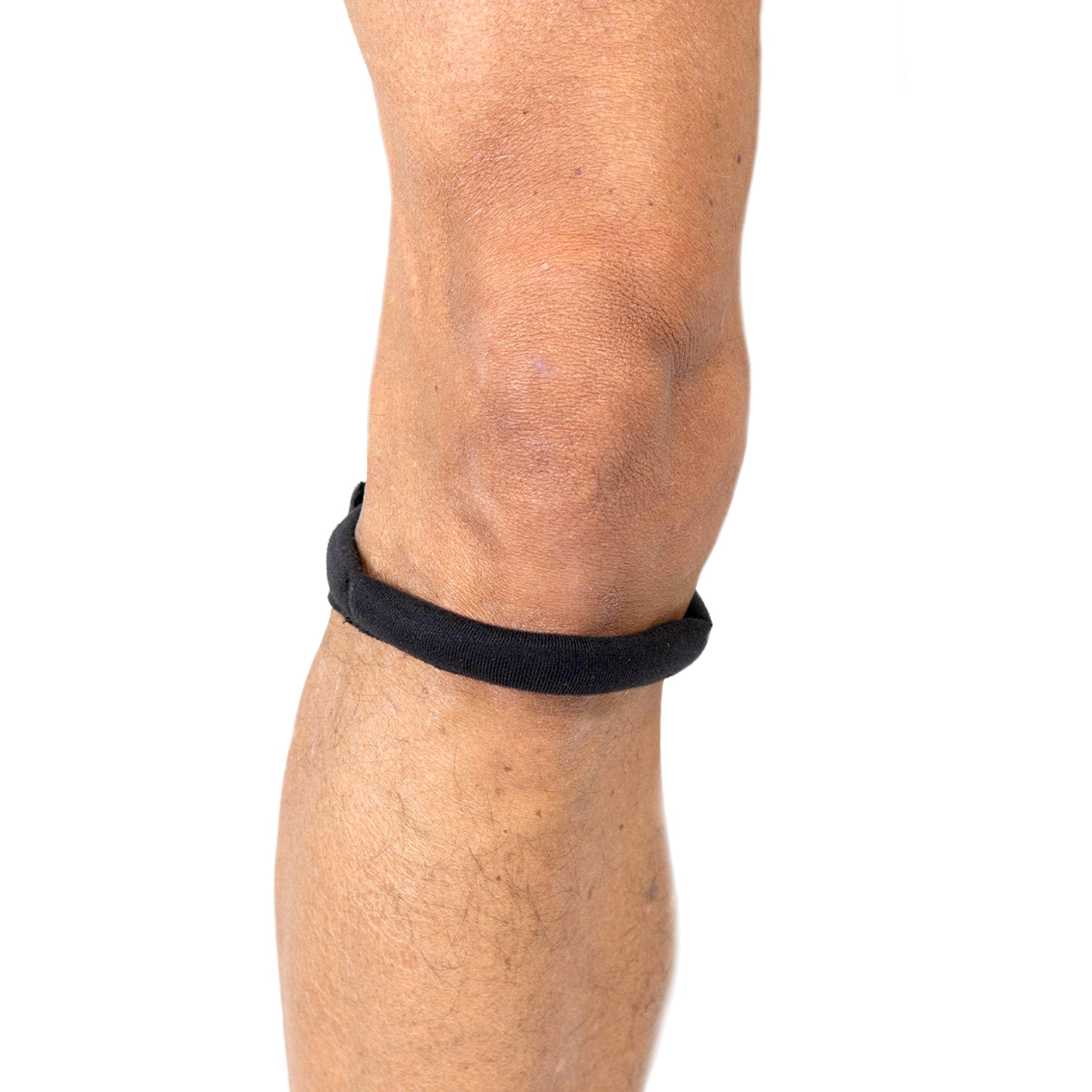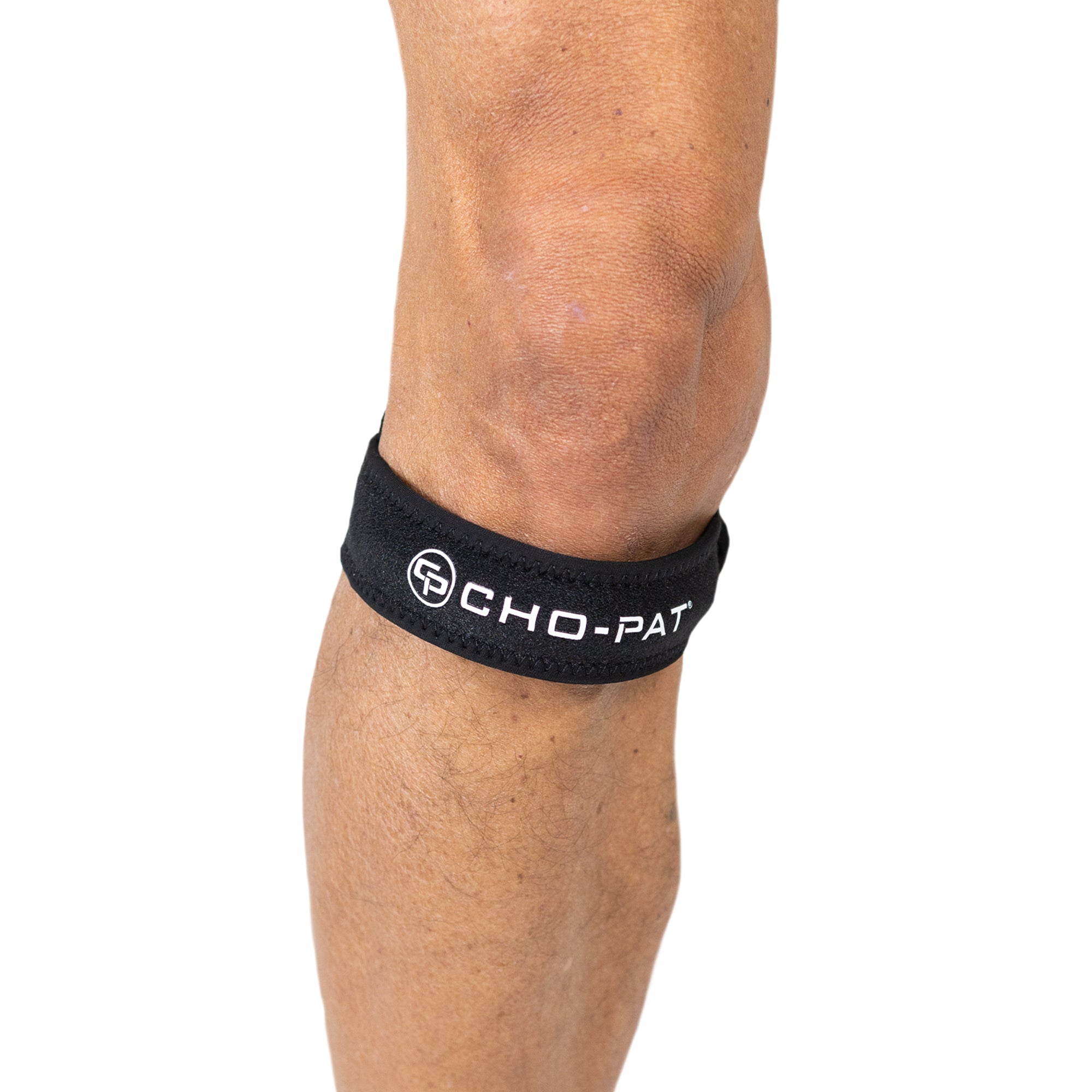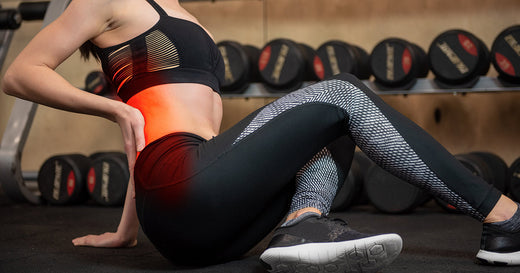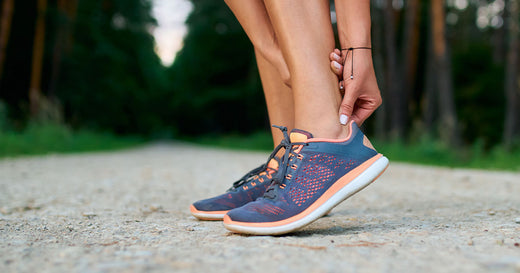Osgood-Schlatter disease causes knee pain in active adolescents, but with the right stretching exercises and preventive measures, symptoms can be managed, and future pain can be avoided.
Before you allow your child to do Osgood-Schlatter disease exercises, ensure their safety by having them wear the Cho-Pat® Original Knee Strap. It offers the user comfort and mobility as they participate in Osgood-Schlatter disease stretches and exercises. It guides the kneecap into a grove, reducing displacement and pain in the area. It is comfortable to wear, so you won’t hear any complaints during Osgood-Schlatter disease exercises.
- Understanding Osgood-Schlatter Disease
- Stretching Exercises You Can Do at Home
- Stretching Exercises with StretchRite
- Preventing Osgood-Schlatter Disease Pain
Understanding Osgood-Schlatter Disease
Osgood-Schlatter disease is a common condition that typically affects children and adolescents, especially those involved in sports that involve running, jumping, or quick direction changes. The pain happens because the growth plate at the top of the shinbone (tibia) becomes irritated, specifically where the kneecap tendon connects. This can lead to knee pain, swelling, and tenderness just below the kneecap. Though Osgood-Schlatter disease usually resolves on its own as the child’s bones stop growing, managing the symptoms is crucial for maintaining comfort and preventing further irritation. Stretching exercises can help relieve pain and prevent complications.
Stretching exercises
Stretching Exercises You Can Do at Home
With the proper protective gear, your child can begin some Osgood-Schlatter disease exercises. The following will outline some Osgood-Schlatter disease stretches that will be easy enough for your child to do:
Quadriceps Stretch
- Stand on one leg and with one hand pull your other foot towards your buttocks, holding your ankle.
- Keep your knees together and push your hips slightly forward to stretch your quadriceps.
- Hold for 20-30 seconds and switch sides.
- Repeat 2-3 times per leg.
Hip Flexor Stretch
- Kneel on one knee. With the other leg in front, bent at a 90-degree angle.
- Keep your back straight as you push your hips forward.
- Hold position for 20-30 seconds and switch sides.
- Repeat 2-3 times per side.
Hamstring Stretch
- Lay on the ground with the buttocks near a doorway.
- Stretch the uninjured leg straight out in front of you through the opening of the door.
- Raise the injured leg up and rest it on the wall or door frame.
- Keep the leg as straight as you can, holding for 30 seconds.
- Relax, and then repeat 3-5 times.
Calf Stretch
- Standing up, face a wall and place the palm of your hands on the wall directly in front of your face.
- Extend the arms. Step the injured leg back so the heel is on the floor and step the other leg forward, bending the knee.
- Slightly turn the toes on the back foot, inward.
- Gently lean towards the wall until the back of your calf is getting a good stretch and hold for 30 seconds.
- Release, relax, and repeat 3-5 times.
Stretching Exercises with StretchRite®
Quadriceps Stretch with StretchRite
- Attach the StretchRite to your foot while lying on your side.
- Gently pull the strap, bringing your heel toward your buttocks.
- Hold the stretch position for 20-30 seconds, then release slowly.
- Repeat 2-3 times per leg.
Hamstring Stretch with StretchRite
- While lying on your back, loop the StretchRite around the ball of your foot.
- Keep your leg straight and pull gently to lift your leg towards the ceiling.
- Hold for 20-30 seconds, then lower the leg.
- Repeat 2-3 times per leg.
Calf Stretch with StretchRite
- Sit with your legs extended in front of you, loop the StretchRite around the ball of one foot.
- Gently pull the strap to stretch your calf muscle.
- Hold for 20-30 seconds and switch legs.
- Repeat 2-3 times per leg.
How to Prevent Osgood-Schlatter Disease?
Understanding methods for how to prevent Osgood-Schlatter disease will not guarantee that the condition will not appear, but it can help to alleviate the pain, should the symptoms persist. How to prevent Osgood-Schlatter disease symptoms is by encouraging children to live a healthy lifestyle.
If they are overweight, encourage them to lose the weight. Help them understand that regular, moderate exercise is important. Additionally, have your children perform some Osgood-Schlatter disease stretches before and after they participate in strenuous activities or sports.
Conclusion
By incorporating these stretches and preventive measures, individuals with Osgood-Schlatter disease can manage their symptoms and continue to stay active while protecting their knees. Adolescents may also benefit from our weak-knee exercises to enhance joint stability.
PLEASE NOTE: The information on this website and article is for information only and should not be used as a substitute for consulting your doctor. Consult your doctor for proper diagnosis and rehabilitation




